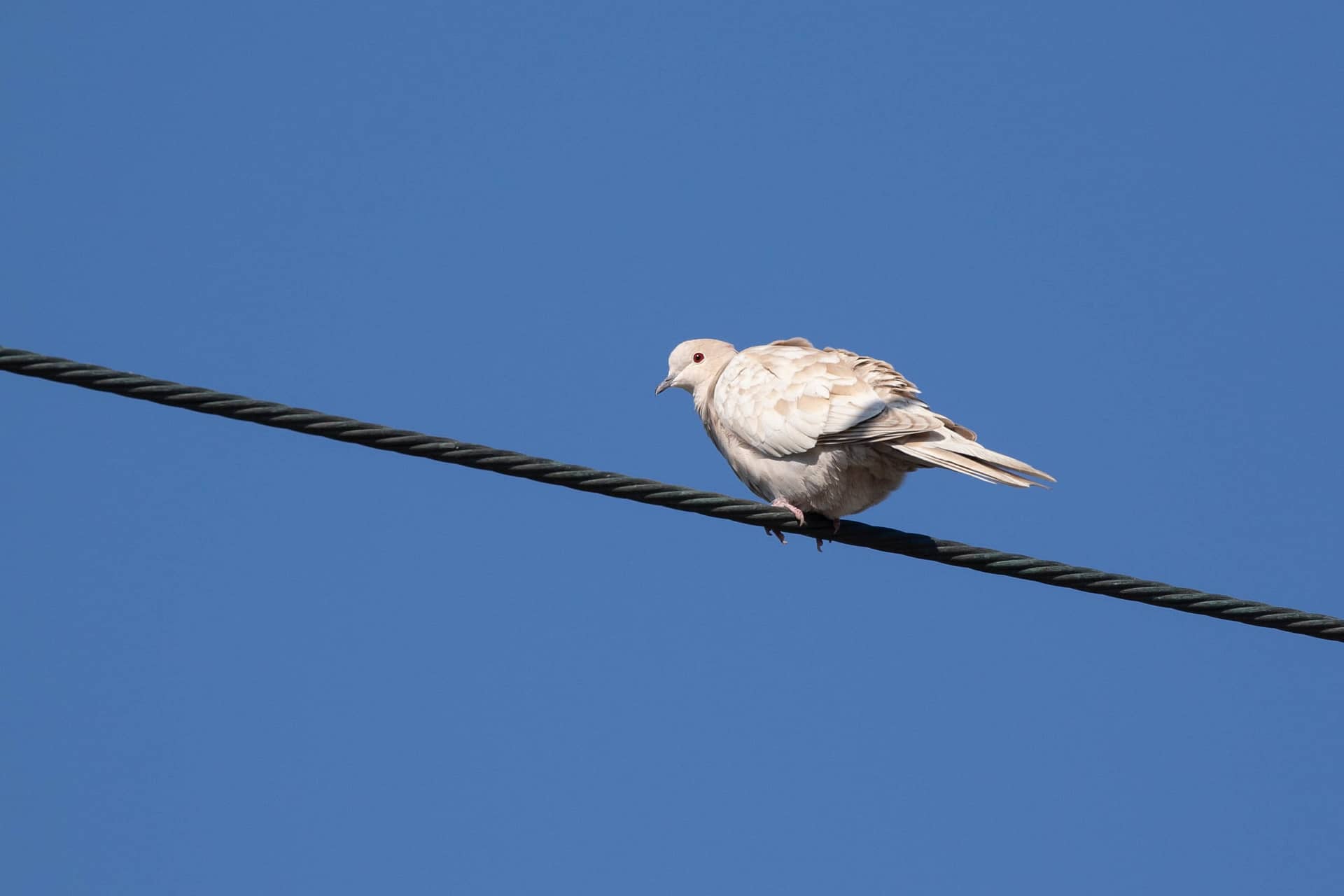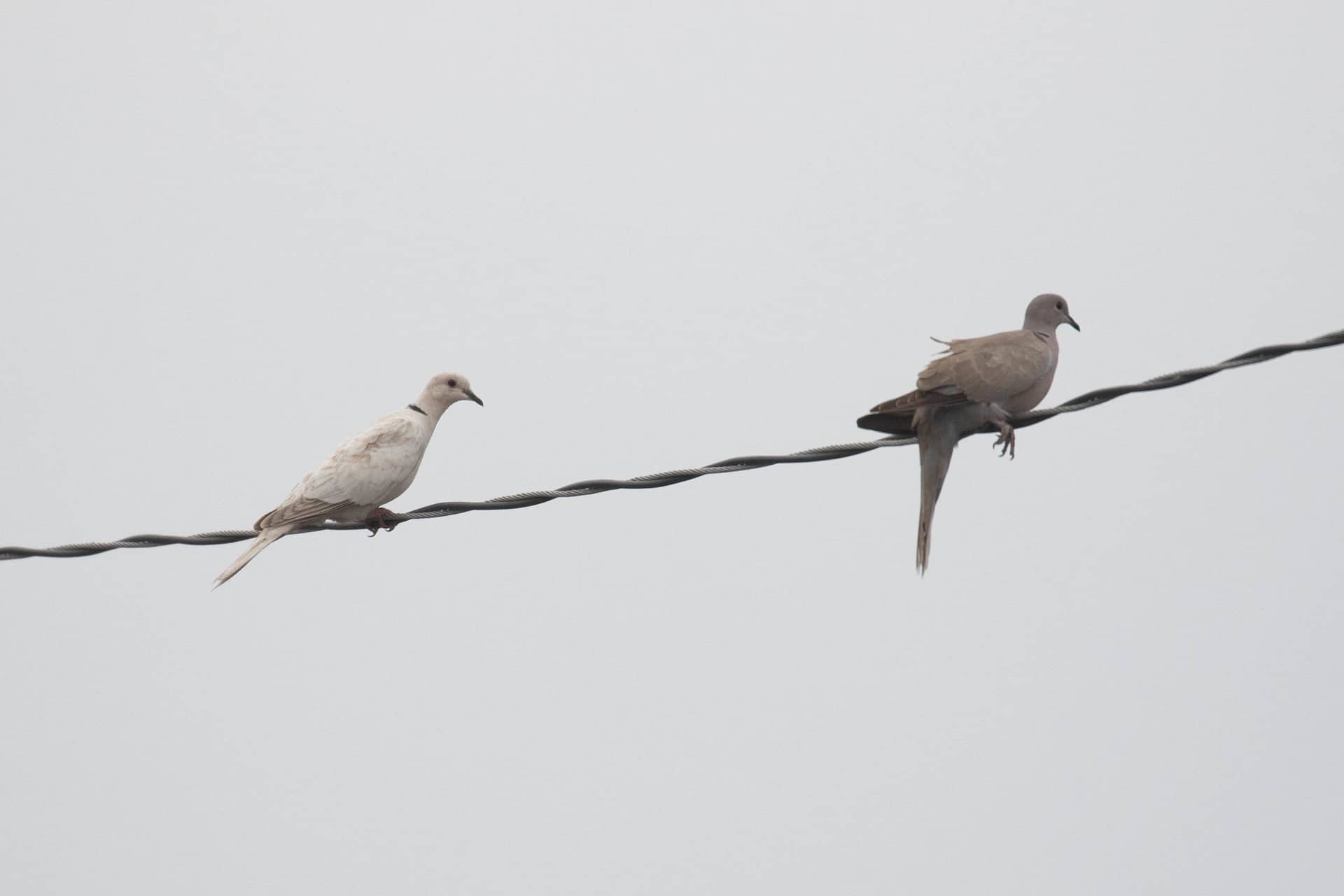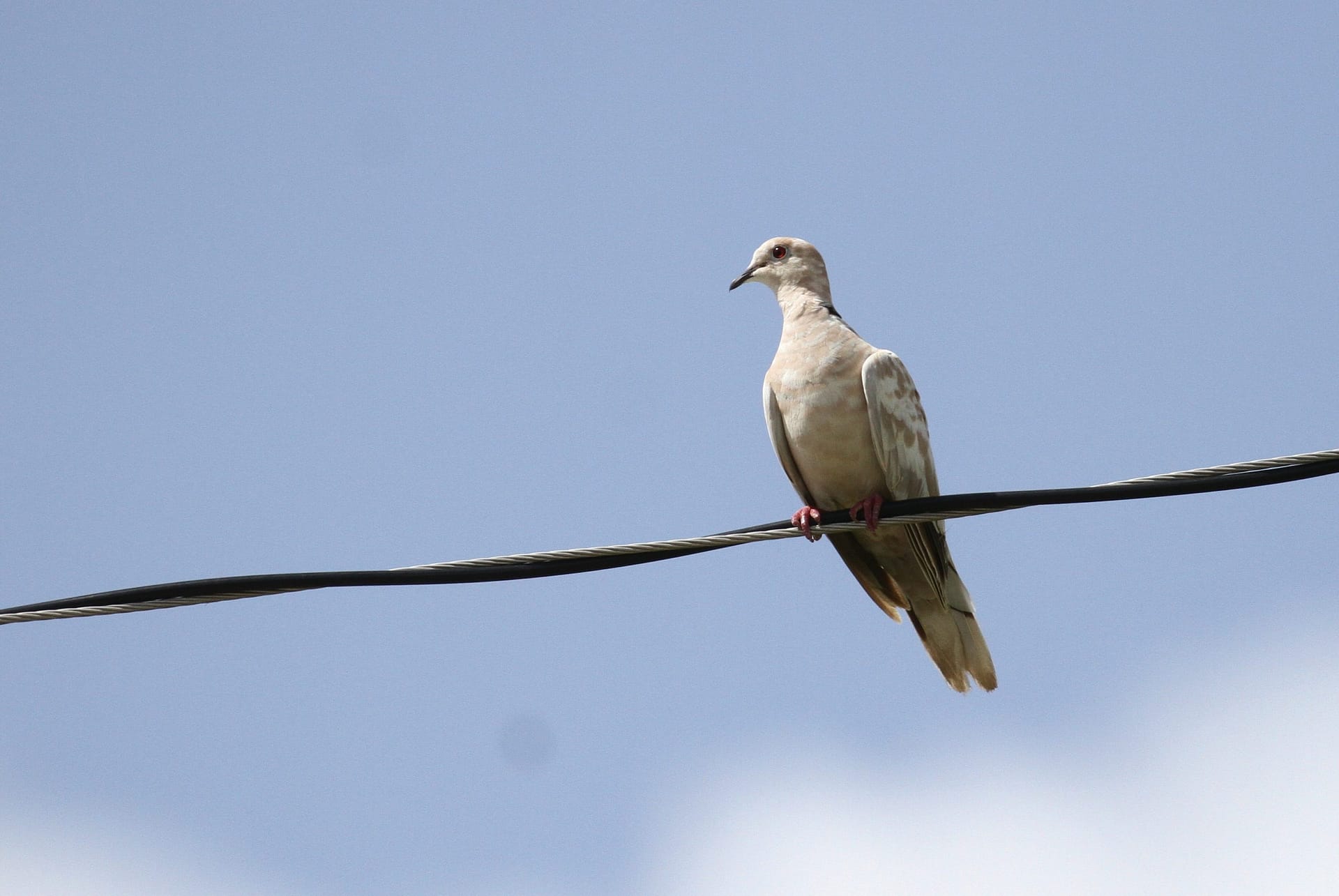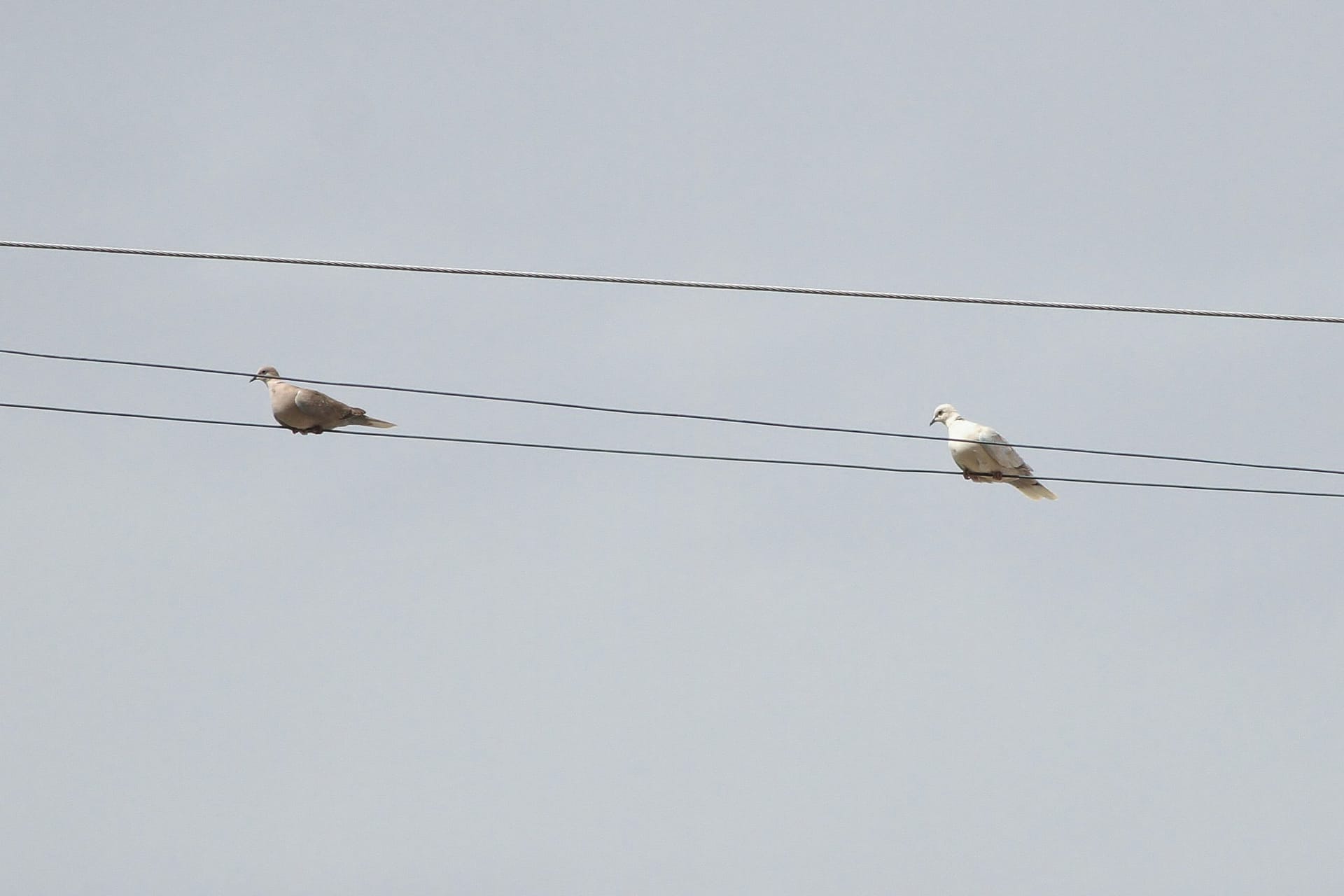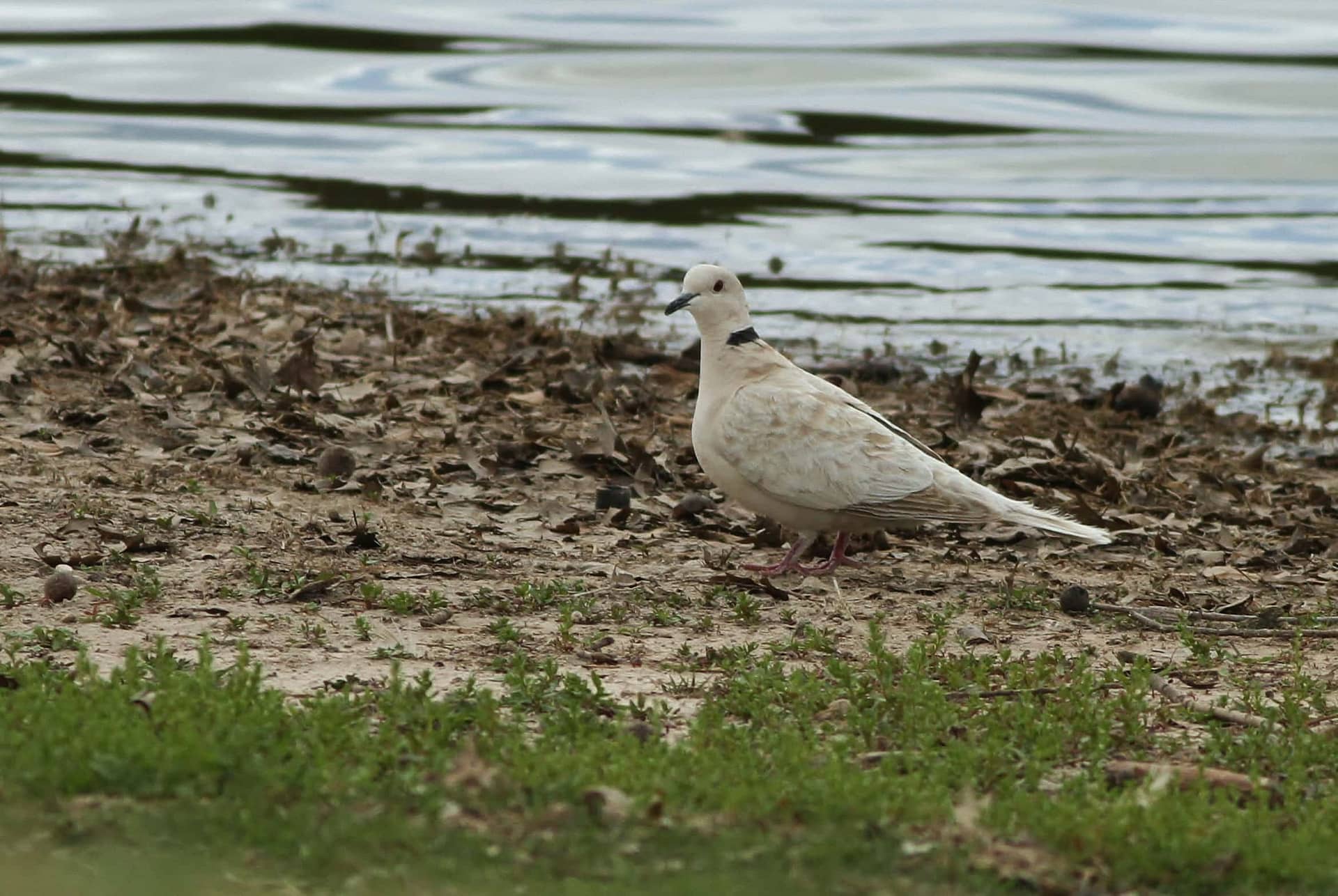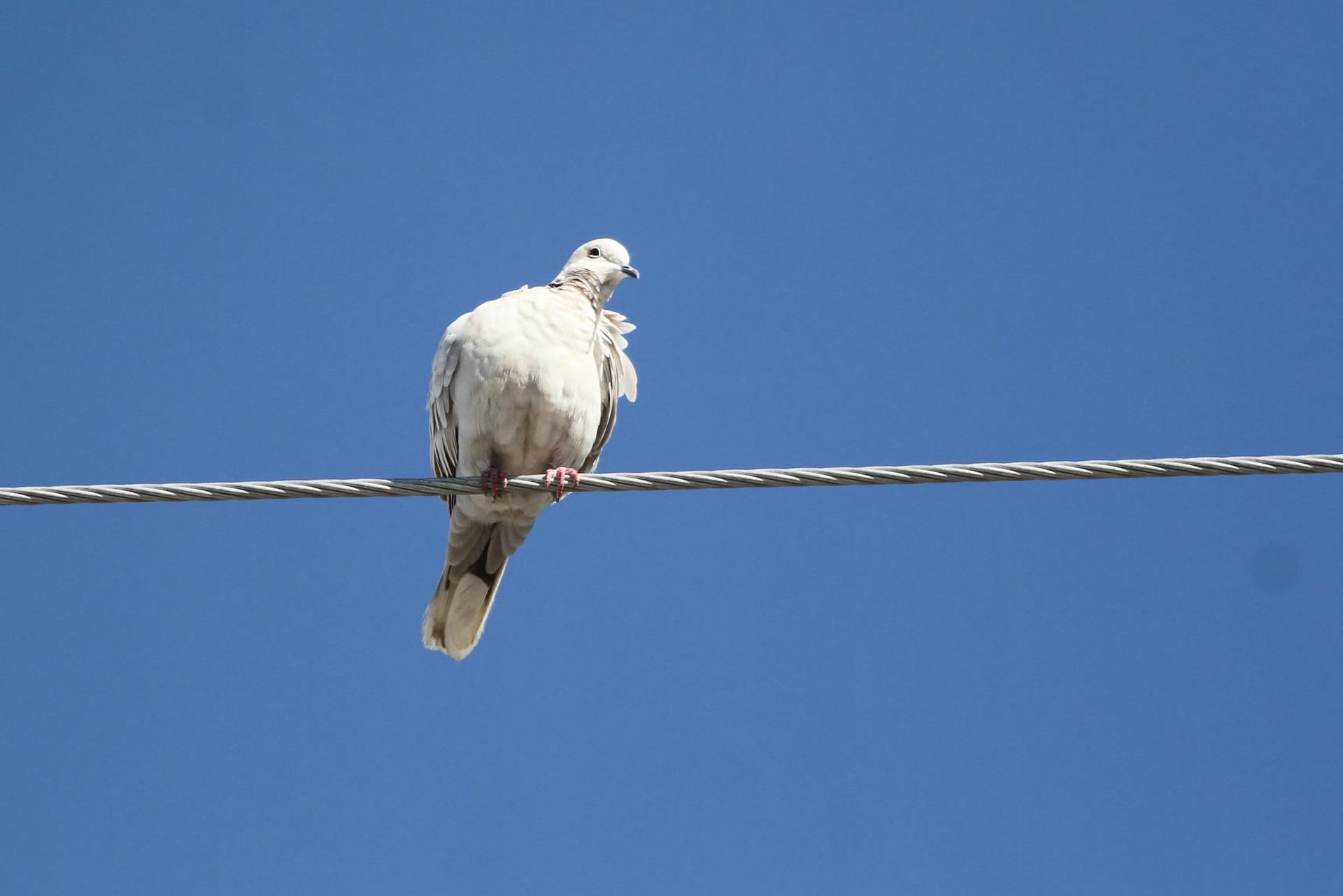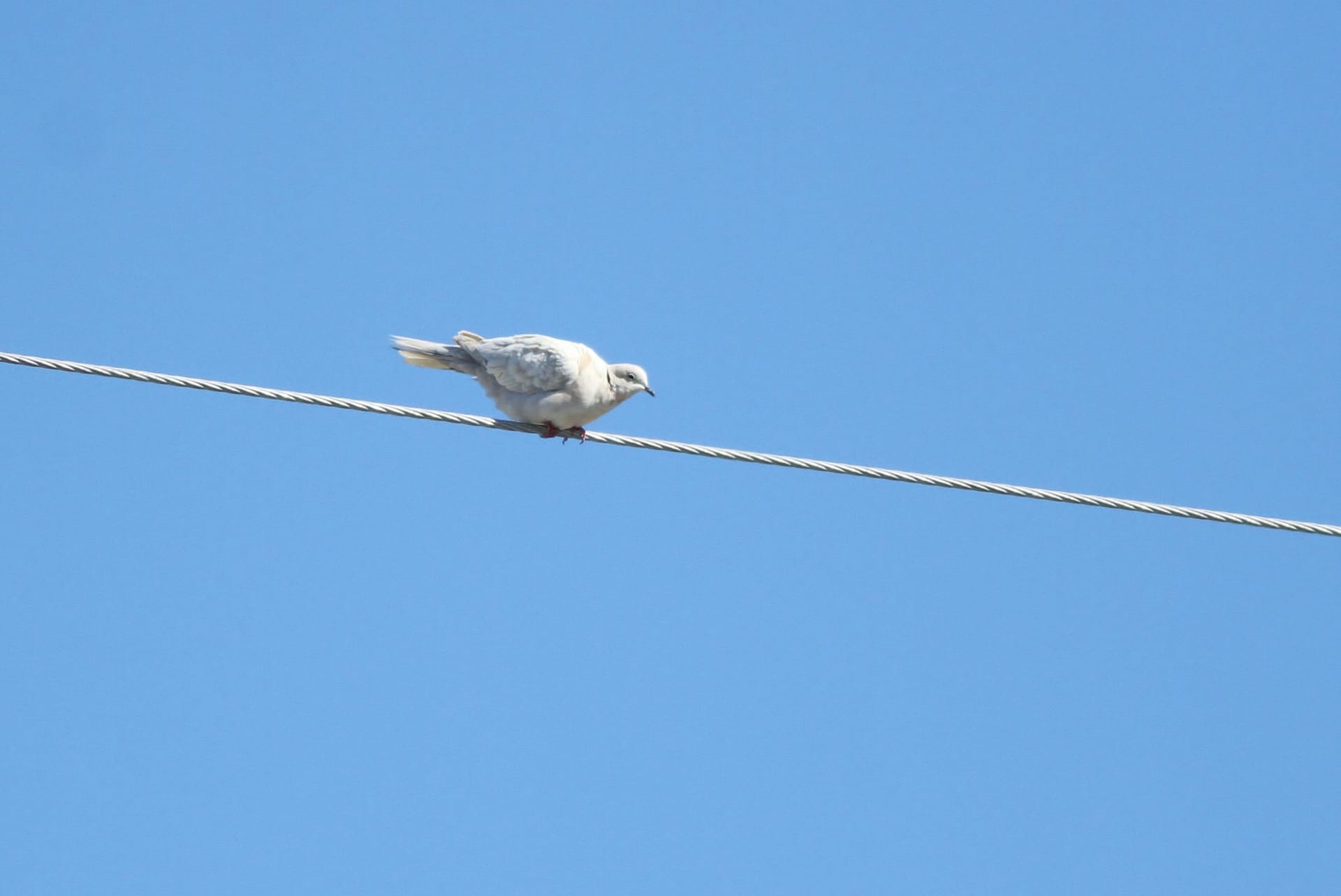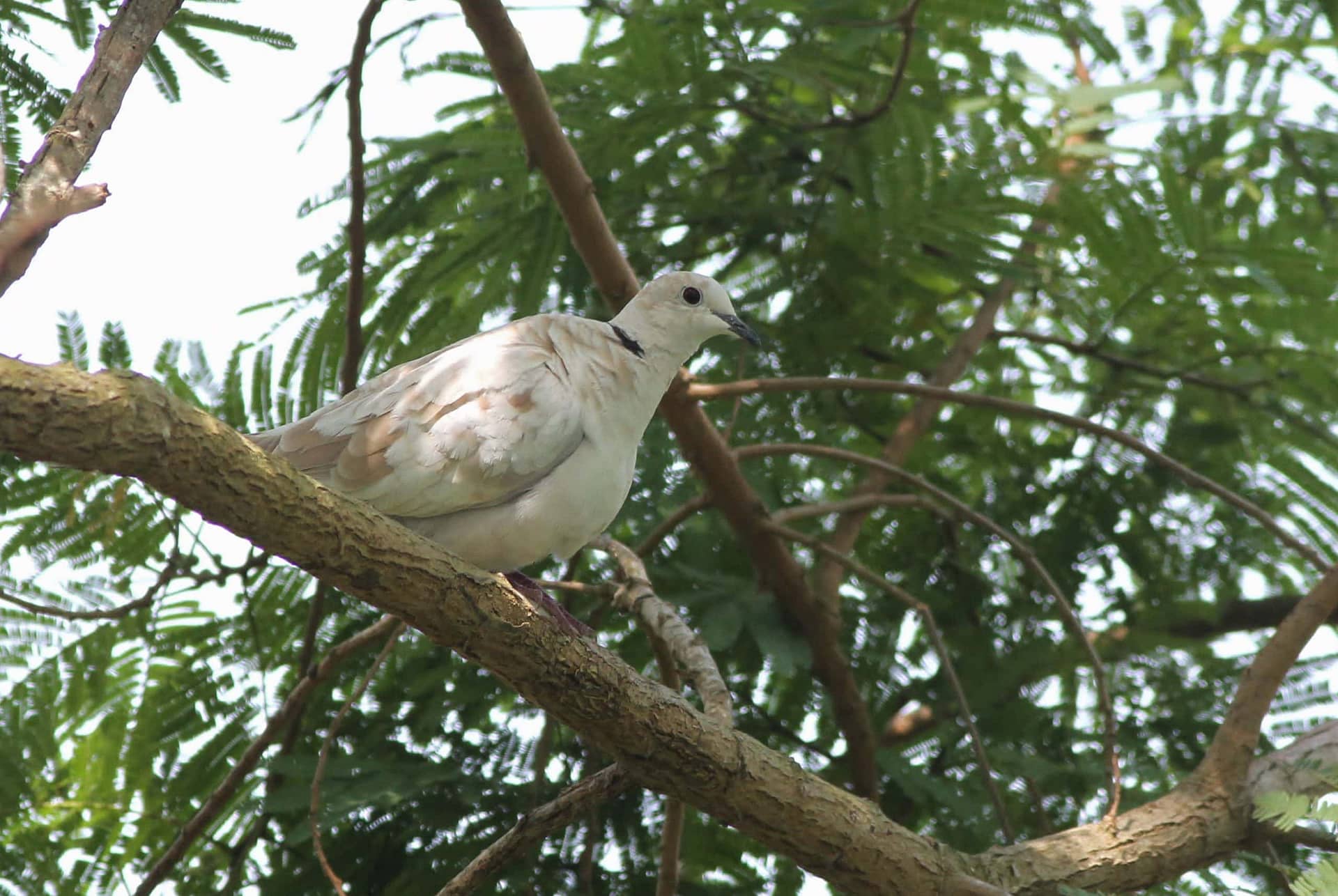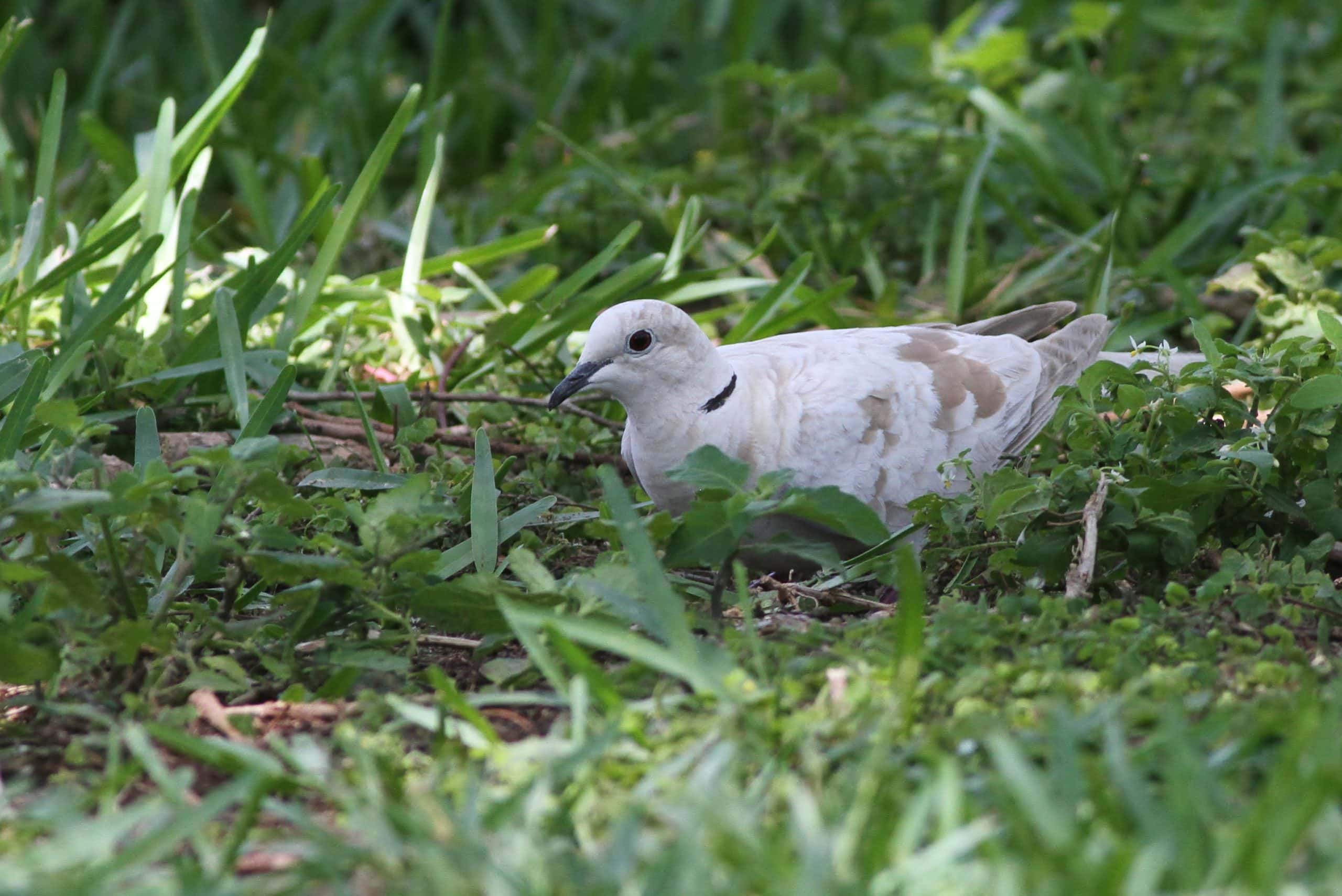
Pale Eurasian Collared-Doves
Dec 23, 2021 | by Alex Lamoreaux
Out of the dozens of bird species introduced to the Americas, none has been so instantly successful or has spread so rapidly than the Eurasian Collared-Dove. These large doves were introduced to the Bahamas in the mid-1970’s, quickly spreading to Florida, and then their population exploded to the point where they have been recorded in every state, province, and country in North America and the Caribbean. They are now resident across most of this range (except the northeast, oddly) and some survey data, such as the Christmas Bird Count, indicates the population may grow by as much as 34% per year! If you’ve birded North America, you are undoubtedly familiar with this bird – and I wouldn’t be surprised if you can currently hearing one coo-ing outside your window. If you have spent time around collared-doves, you may have noticed that every once in awhile you’ll see a pale (often called leucistic by birders) or otherwise dilute-plumaged bird. These white or off-white doves readily stand out among the typical khaki-brown birds. The fact that 1-5% of Eurasian Collared-Doves show this pale plumage is very likely due to the Founder Effect where the introduction of a small number of doves created limited genetic variation in the booming population, and so odd and normally rare recessive traits become more regular. Below is a gallery of some pale Eurasian Collared-Doves I’ve come across in North America. Notice that most of these birds still do show some patchy darker ‘normal’-colored feathers scattered around and aren’t completely diluted. Note too that the very similar African Collared-Dove can often naturally be this pale, but details in the amount of black along the underside of the tail feathers can help to confirm a true African over a pale Eurasian. African Collared-Dove has colonized some Caribbean Islands, especially Puerto Rico, but this species is still very rare throughout North America and most sightings are typically one-off escapees.

































